解説 / Description
「ウズマキ」の通称で知られる本種は、スズキ目キンチャクダイ科に属するタテジマキンチャクダイの幼魚です。濃紺の体に白と青の渦巻き模様が描かれた神秘的な姿は、海水魚の中でも特に高い人気を誇ります。しかし、この姿は成長の一過程に過ぎず、成魚になると「タテキン」と呼ばれる、青地に黄色の縦縞模様を持つ堂々たる姿へと劇的な変身を遂げます。この成長に伴う色彩変化を観察できることが、本種を飼育する最大の魅力の一つです。 Known by the common name “Uzumaki,” this species is the juvenile form of the Emperor Angelfish, belonging to the Pomacanthidae family. Its mysterious appearance, featuring swirling patterns of white and blue on a deep navy body, makes it exceptionally popular among marine aquarists. However, this look is merely a phase in its development. As it matures, it undergoes a dramatic transformation into the majestic adult form known as “Tatekin,” which boasts bold yellow vertical stripes on a vibrant blue body. Observing this color change throughout its growth is one of the greatest appeals of keeping this species.
基本情報 / Basic Information
| 学名 / Scientific Name | Pomacanthus imperator |
|---|---|
| 通称 / Common Name | ウズマキ(幼魚)、ウズキン(半成魚)、タテキン(成魚)Uzumaki (Juvenile), Uzukin (Sub-adult), Tatekin (Adult) |
| 分類 / Family | スズキ目キンチャクダイ科サザナミヤッコ属Family: Pomacanthidae (Marine Angelfishes) |
| 英名 / English Name | Emperor Angelfish |
| 分布 / Distribution | インド洋から太平洋の熱帯・亜熱帯海域。西は紅海やアフリカ東岸、北は南日本、南はオーストラリアのグレートバリアリーフまで広く分布する。Widespread throughout the tropical and subtropical waters of the Indo-Pacific Ocean, from the Red Sea and East Africa in the west, to Southern Japan in the north, and the Great Barrier Reef of Australia in the south. |
| 最大体長 / Max Size | 約40cmApprox. 40cm (15.7 inches) |
| 寿命 / Lifespan | 10~20年、あるいはそれ以上10 to 20 years, or potentially longer |
飼育環境 / Aquarium Environment
| 水槽サイズ / Tank Size | 幼魚単独でも最低90cm規格水槽(約160L)が必要。最終的に成魚を飼育するには、幅150cm~180cm(約500~800L)以上の大型水槽が必須となる。A minimum of a 90cm standard tank (approx. 160L / 42 gal) is required even for a single juvenile. To ultimately house an adult, a large tank of 150cm-180cm (approx. 500-800L / 132-211 gal) or more is essential. |
|---|---|
| 水温 / Temperature | 23~27°C (73-81°F), ideally around 25°C (77°F). |
| 水質 / Water Quality | pH: 8.1~8.4、比重: 1.020~1.025。汚染に敏感なため、硝酸塩濃度を低く保つことが重要。pH: 8.1-8.4, Specific Gravity: 1.020-1.025. It is sensitive to pollutants, so keeping nitrate levels low is crucial. |
| レイアウト / Layout | ライブロックを多めに配置し、魚が安心して隠れることができる洞窟や岩棚を多く設ける。これはストレス軽減に非常に重要。Provide plenty of live rock to create numerous caves and ledges where the fish can hide securely. This is very important for stress reduction. |
| 注意点 / Precautions | 驚いた際に水槽から飛び出すことがあるため、蓋やジャンプガードの設置は必須。高水温に弱いため、夏場は水槽用クーラーが不可欠。It may jump out of the tank when startled, so a lid or jump guard is mandatory. It is sensitive to high temperatures, making an aquarium chiller essential during the summer. |
餌と給餌 / Feeding
| 餌の種類 / Diet | 雑食性。スピルリナなど植物質を多く含む高品質な海水魚用人工飼料を主食に、冷凍餌、乾燥海苔、そしてカイメン質を含む大型ヤッコ専用フードをバランス良く与えることが長期飼育の鍵となる。Omnivorous. The key to long-term success is a balanced diet. Use a high-quality marine artificial feed rich in plant matter like spirulina as the staple, supplemented with frozen foods, dried seaweed, and specialized large angelfish foods containing sponge material. |
|---|---|
| 給餌のポイント / Feeding Tips | 1日に2~3回、数分で食べきる量を与える。導入初期は活ブラインシュリンプなどで餌付けを開始し、徐々に人工飼料に慣らしていくと良い。ビタミン剤で栄養を強化することも推奨される。Feed 2-3 times a day in amounts that can be consumed within a few minutes. For newly introduced fish, start with highly palatable foods like live brine shrimp to entice eating, then gradually introduce artificial feeds. Fortifying food with vitamins is also recommended. |
性格と混泳 / Temperament and Tank Mates
| 性格 / Temperament | 幼魚期は比較的温和で臆病だが、成長に伴い縄張り意識が非常に強くなり、攻撃的になる。この変化を理解した上で混泳計画を立てる必要がある。Juveniles are relatively peaceful and shy, but they become very territorial and aggressive as they mature. This change in temperament must be considered when planning for tank mates. |
|---|---|
| 混泳の相性 / Compatibility | 他の大型ヤッコとの混泳は激しく争うため極めて困難。サンゴ、シャコガイ、ケヤリなどは捕食対象となるため、リーフタンクでの飼育は基本的に不可。遊泳力のあるハギ類や、活発なベラ、スズメダイなどとは注意すれば混泳可能。Keeping with other large angelfish is extremely difficult due to intense fighting. Not reef-safe, as it will prey on corals, clams, and feather dusters. Cohabitation with fast-swimming surgeonfish and active wrasses or damselfish is possible with caution. |
病気と対策 / Diseases and Prevention
| かかりやすい病気 / Common Diseases | 白点病、海水ベルベット病、リンホシスチス症、吸虫症(エラムシ)、そして不適切な環境や栄養不足が原因とされるHLLE(頭部及び側線びらん症)。Marine Ich (Cryptocaryon irritans), Marine Velvet (Amyloodinium ocellatum), Lymphocystis, Flukes, and HLLE (Head and Lateral Line Erosion), which is linked to poor environment and nutritional deficiencies. |
|---|---|
| 対策と予防 / Prevention | 病気の持ち込みを防ぐため、最低4週間の検疫(トリートメント)が最も重要。清浄で安定した水質を維持し、栄養バランスの取れた多様な餌を与えることが最善の予防策となる。A quarantine period of at least 4 weeks for new arrivals is the most critical step to prevent introducing diseases. Maintaining pristine, stable water quality and providing a varied, nutritionally balanced diet are the best preventive measures. |
増やし方(繁殖) / Breeding
| 繁殖形態 / Reproduction | 放卵放精形態。かつては飼育下繁殖は不可能とされていたが、近年では商業ベースでの養殖(ブリード)に成功しており、養殖個体も流通している。Pelagic spawner. While once considered impossible to breed in captivity, commercial aquaculture has become successful in recent years, and captive-bred individuals are now available. |
|---|---|
| 繁殖のポイント / Breeding Tips | ペアの形成や産卵誘発、稚魚の育成には非常に大規模で特殊な設備が必要なため、個人での繁殖は極めて難しい。飼育を楽しむ上では、信頼できるショップからブリード個体を入手するのが最も確実な選択肢となる。Breeding is extremely difficult for hobbyists, as it requires vast, specialized systems for pair formation, spawning induction, and raising fry. For aquarists, obtaining a captive-bred individual from a reputable source is the most reliable option. |
特徴的な行動と豆知識 / Behavior and Fun Facts
| 特徴 / Characteristics | ・幼魚の渦巻き模様は、縄張り意識の強い成魚からの攻撃を避けるための「種内カモフラージュ」と考えられている。 ・和名の「タテジマ(縦縞)」は、魚の頭を上にした際の縞の向きを基準としているため、見た目の横縞とは異なる。 ・産地によって成魚の姿が異なり、背ビレ後端が長く伸長する「太平洋型」と、丸みを帯びる「インド洋型」が存在する。 ・脅威を感じると「ゴツゴツ」というノッキング音を出すことがある。– The juvenile’s swirl pattern is thought to be “intraspecific camouflage” to avoid attacks from territorial adults. – The Japanese name “Tatejima” (vertical stripes) is based on the stripe orientation when the fish’s head is facing up, which appears horizontal on the fish’s body. – Adult morphology varies by region: the “Pacific Type” develops a long filament on its dorsal fin, while the “Indian Ocean Type” has a rounded dorsal fin. – It may produce a “knocking” or “grunting” sound when it feels threatened. |
|---|
まとめ / Conclusion
ウズマキは、成長と共にその姿を劇的に変える、非常に魅力的で飼育しがいのある海水魚です。その美しさを最大限に引き出し、長期にわたり健康に飼育するためには、最終的なサイズを見越した大型水槽、強力なろ過システム、そしてカイメン質を含む多様な餌が不可欠です。 The Uzumaki is a highly captivating and rewarding marine fish that dramatically changes its appearance as it grows. To bring out its maximum beauty and maintain its health for the long term, a large aquarium planned for its adult size, a powerful filtration system, and a varied diet including sponge material are essential.
近年では、環境負荷が少なく、餌付けも容易なブリード個体が入手可能となり、飼育のハードルは以前よりも下がりました。皇帝の名を持つこの魚を水槽に迎えることは、その長い一生に責任を持つという長期的なコミットメントですが、日々の変化を観察する喜びは、他の魚では味わえない格別なものとなるでしょう。 In recent years, the availability of captive-bred individuals, which are more sustainable and easier to feed, has lowered the barrier to entry for keeping this species. Welcoming this “Emperor” into your tank is a long-term commitment to its entire lifespan, but the joy of observing its daily transformations offers an exceptional experience unmatched by other fish.
▶ 記事の生体をAMAZONで買う ▶ 記事の生体をYahooで買う








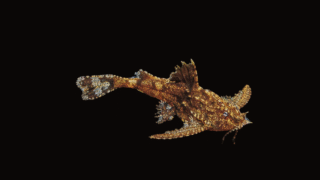
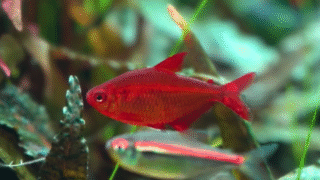
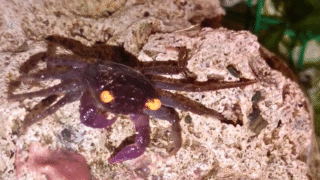
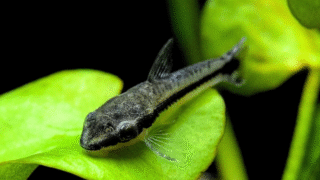
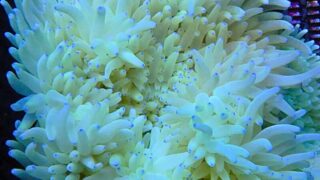
コメント